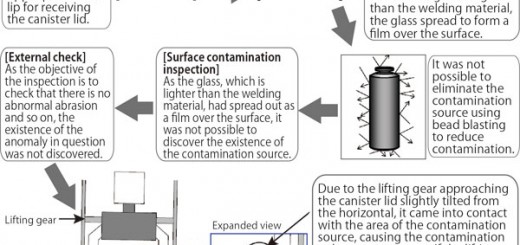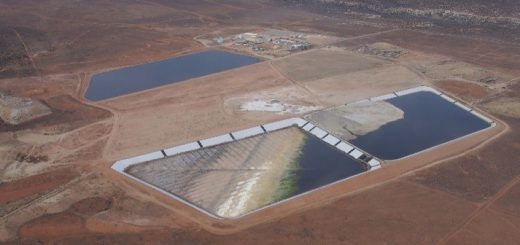Subcommittee on Specified Radioactive Waste, Report No.8: What the Summary on the ‘Communication Gathering’ is Really About
By Takano Satoshi
The Subcommittee on Specified Radioactive Waste (below, “the Subcommittee”) held its third meeting on April 30. I would like to focus on the interim report, which sums up the “Communication Gatherings,” the main topic of our discussions. These “gatherings” were held in Suttsu Town and Kamoenai Village, Hokkaido, where literature surveys are underway. The “gatherings” were run by NUMO and the local municipal offices. Facilitators also attended in the form of local-resident participation, and they discussed the geological disposal project and community development. NUMO is currently evaluating and verifying how these “gatherings” went.
The residents were interviewed for a period of one month from the end of February to the end of March. Though the focus was on those who had attended the “gatherings,” residents who had not attended were also included, for a total of 30 residents of Suttsu Town and 21 of Kamoenai Village. After that, the oral contents of the interviews were transcribed into written data and “interpreted” by a team of seven independent specialists, consisting of five recommended by Subcommittee members and two recommended by the Ministry of Economy, Trade and Industry (METI).
An interim report containing the interpreted interviews was released at the third Subcommittee meeting. The report consisted of NUMO’s own summarization and evaluation of the portions of the interpretation that had been deemed important by the third-party specialists and highlighted by marker pen.
I submitted my own written views in a position document to the Subcommittee a few days before its third meeting. This was because during the interviews, I heard many residents expressing doubts, so I felt it necessary to summarize what I had heard in a position document and approach NUMO. What I considered most problematic was that it seemed NUMO may have broken rules that the Subcommittee had set on how to conduct the interviews.
The Subcommittee had agreed that when conducting the interviews with the residents, NUMO should indicate beforehand that there were three choices of interviewer (1) a facilitator, (2) and (3) a NUMO representative, and explain that if residents request it, a third-party expert can be present for the interview.
Early in the investigation, however, Suttsu’s residents informed me that no such explanations were being provided. When I checked with NUMO, they apologized, acknowledging that their instructions to the field staff had been insufficient. I anticipated improvements, so did not announce this problem, but was informed of the same problem again in the final days of the interviews.
Considering this to be a serious shortcoming, I inquired with NUMO the same day. In response to my written views, NUMO initially stated, “We thought we were able to respond quickly and address the problem reasonably well locally, but we see what is really going on and are replying to you.” If they broke rules that were based on their agreement with the Subcommittee, NUMO bears serious responsibility.
I’ve narrowed my points down to save time and space, but my criticisms touched on various problems such as inappropriate intervention by NUMO in the interviews and their ignoring of residents’ requests for a third-party expert to attend.i) I also included a few remarks from other Subcommittee members in my position document. Subcommittee members Murakami and Juraku took serious issue with NUMO. The former said, “I agree with the point being made that there is a bias among residents who have not participated in the “gatherings.” I proposed methods for conducting the interviews and recruiting interviewees, but were they considered?” and the latter, “It is extremely regrettable that issues have occurred that should have been avoided under the research guidelines of the Japan Sociological Society, which were referred to this time. We must bear in mind that surveys have effects on communities, including negative effects.” My position paper was carried by several newspapers.ii) I think it may have been helpful in clarifying issues that occurred in the process of conducting the interviews.
I also raised questions about the method of interpreting the interviews. The interpretations were carried out by only one third-party expert for each interview. What one person considers most important will of course differ from one expert to another. I suggested that mechanisms should be considered to have more than one expert conduct an interpretation of each interview and to allow anyone to verify the interpretations by, if possible, releasing data on the contents of the interviews to the degree that it does not reveal the identity of individuals. Then, to identify appropriate issues, I also proposed implementing open discussions between the third-party experts and the Subcommittee members.
In addition, I expressed my opinion on the way NUMO compiled its report, based only on the resident interviews and their analysis. A decent summarization, however, would not be possible without a grasp of the purposes of the design and actual operation of the “gatherings.”
There is also the matter of its having been conducted in an unfair manner in Suttsu Town. The residents had been requesting all along to hear opinions of experts skeptical of geological disposal, but NUMO continued to ignore them. It is NUMO’s responsibility to explain why they ran the “gatherings” as they did and why they were unable to make improvements. I had suggested previously that Subcommittee members or third-party experts should also conduct interviews of the NUMO officials who were involved in the “gatherings.” In fact, residents who were interviewed also requested this. NUMO avoided responding clearly to the recommendations that I presented. If they fail to respond, however, they will not be able to produce accurate, objective reports. I want to continue negotiating with NUMO in the future toward implementation of my recommendations.
Finally, I would like to bring up NUMO’s own evaluation of the contents of the interviews. I did not have a chance to point out this problem in my position statement, but a number of other Subcommittee members have expressed critical views. Regarding the residents’ acceptance of NUMO being in charge of the secretariat, Subcommittee member Murakami noted, “It is said that they have generally accepted it, but judging from the residents’ comments it seems doubtful. Some are hoping for it to be run in an impartial, non-aligned manner.”
Subcommittee member Yagi said, “After considering NUMO’s acceptance relatively favorably, I have concluded that there are also issues, but it is not as if NUMO, in particular, were looking back on the “gatherings” with the assumption that it would continue to hold them in the future. It would be better if the approach to these “gatherings” could be made more diverse. It is important to take the results of the interviews seriously and sort out the issues.” Similarly, Subcommittee member Juraku pointed out, “We clearly should change our stance to reflect what we learn from the questions, proposals and other views being expressed.”
Is NUMO, who conducts interviews in ways the Subcommittee has not agreed on, interprets the results unreliably, and evaluates itself highly even when causing issues, really qualified to manage these “gatherings”? Their draft report will be released in the near future, so I want to keep a sharply critical eye on it.
I also want briefly to touch upon other topics of discussion. METI has announced that it will implement a “Regional Future Vision Survey and Public Relations Project” under its FY2024 budget. This will be aimed at cultivating a deeper understanding of final disposal while formulating a medium- to long-term vision for promoting the region. In a sense, they intend to conduct activities similar to these “gatherings” regardless of whether or not literature surveys proceed.
The organization METI has entrusted to handle this seems to be creating opportunities for discourse while utilizing experts on geological disposal and community development. METI explains that the project is based on heart-searching stemming from the refusal by Tsushima City, Nagasaki Prefecture to accept a literature survey, but I see no such self-reflection. In effect, isn’t this just like profiting from a disaster?
They say they want to enable these “gatherings” to be utilized regardless of whether the literature survey is conducted or not, but METI is naturally implementing this with the idea of it luring communities to apply for the literature survey. There is thus a high likelihood of this project causing strife within communities. Even if this project does not result in grants, rumors will emerge of grants being used for community development. In the end, I told them that I strongly oppose this project, as it makes no change in any way to the current structure, which was created through monetary incentives and results in the fueling of local conflicts.
METI explained, “We are doing it this way because we couldn’t achieve a calm discussion .” In the future, the “Regional Future Vision Survey and Public Relations Project” could be rolled out nationwide, which would be completely unacceptable. Local residents need to keep a wary eye on this project.
- i) The author’s position document has been posted on the Subcommittee’s website (in Japanese):
www.meti.go.jp/shingikai/enecho/denryoku_gas/radioactive_waste/pdf/003_s03_00.pdf
- ii) “Criticisms of NUMO’s Opinion Extraction—Evaluating the Communication Gatherings on Nuclear Garbage in Suttsu and Kamoenai—METI Council.” Hokkaido Shimbun, 30 April 2024, and others (in Japanese).


